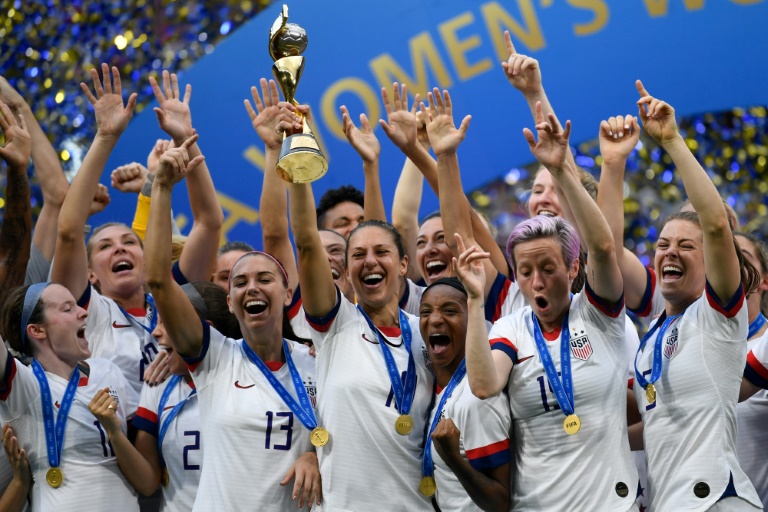Adam Smith v. Karl Marx: Women’s Soccer Players and the Gender Wage Gap
The real competition for the U.S. women’s soccer team isn’t on the pitch; it’s in the court room, where they are trying to defy the laws of basic economics.
 The 26 members of the U.S. Women’s Soccer Team, winners of the 2019 World Cup, are in the midst of a court battle against the US Soccer Federation, with whom they have a collective bargaining agreement signed in 2016. The ladies are screaming about gender discrimination and the gender pay gap. They want to be paid the same as the men on the U.S. Men’s Soccer Team. Or as CBS’s 60 Minutes frames it:
The 26 members of the U.S. Women’s Soccer Team, winners of the 2019 World Cup, are in the midst of a court battle against the US Soccer Federation, with whom they have a collective bargaining agreement signed in 2016. The ladies are screaming about gender discrimination and the gender pay gap. They want to be paid the same as the men on the U.S. Men’s Soccer Team. Or as CBS’s 60 Minutes frames it:
Few teams have been as glorious on the soccer field as the United States Women’s National Team. They’ve won three World Cups, four Olympic gold medals, and set the standard in the most popular sport on the planet. But despite their achievements, the players say they have been discriminated against, paid less and treated worse, next to the U.S. men’s team. Soccer may be known as the beautiful game, but the team has embarked on a bruising and historic legal fight for equality and their opponent is the U.S. Soccer Federation, their own employer. For the players, it’s the match of their lives. They hope a victory will help close the gap, not just in sport, but in any job where women do the same work as men for less pay.
Heart rending, is it not? There is a reason everyone on the left is framing this as an equitable and emotional argument. Neither statutory law nor the laws of free market economics are on the side of the ladies.
If their labor was purely soccer and we lived in the world of Karl Marx and the labor theory of value, they would have a good argument. It is not. Whether the women win or lose on the pitch, the labor of the U.S. women’s soccer team has no intrinsic value to their employer, the USSF. To the employer, the sole value of the ladies’ labor is to generate revenue, and women soccer players overall do quite poorly relative to the men. Only a small subset of soccer fans care enough about women’s soccer to support it. For comparison, the world soccer governing body, FIFA,reported revenues from men’s soccer in 2018 of “over $6 billion” in revenue in 2018, while the women’s tournament “is estimated to only have brought in $131 million in 2019.”
So briefly, what is the law? For all the screaming about wage gap and the need for new laws to address it, the truth rarely stated by anyone on the left, is that we have had an equal pay law on the books for 56 years — The Equal Pay Act of 1963. That law, codified at 29 U.S.C. § 206(d)(1), provides:
No employer . . . shall discriminate . . . between employees on the basis of sex by paying wages to employees in such establishment at a rate less than the rate at which he pays wages to employees of the opposite sex in such establishment for equal work on jobs the performance of which requires equal skill, effort, and responsibility, and which are performed under similar working conditions,
However, it also provides that the employer can pay differential wages if:
. . . such payment is made pursuant to (i) a seniority system; (ii) a merit system; (iii) a system which measures earnings by quantity or quality of production; or (iv) a differential based on any other factor other than sex.
Call me a running dog capitalist pig, but men responsible for a revenue stream 45 times as large as the women makes me wonder whether the ladies in America are grossly overpaid? Be that as it may, I have no doubt that the women will be pointing out that they were actually responsible for a slightly higher revenue stream than the men of the U.S. this year, as the ladies won significant prize money for winning the World Cup while the American men failed to qualify for the World Cup tournament. That is deceptive, however, as the women, in their collective bargaining agreement, opted for the security of an annual salary plus a small portion of prize money while the men collectively bargained for the opposite — they only get paid through prize money bonuses. And I am assuming the women are not claiming to be so stupid as to be unable to understand the collective bargaining agreement that they signed merely three years ago.
We shall see. The case is filed in the 9th Circuit (of course), so I have little doubt that the women will either win big irrespective of the law or the USSF will fold rather than continue to get horrific press about their “unconscionable” discrimination against women. I think the only fair solution is for several highschool boys to identify as women and take over all the spots on the women’s team. What say you?
And on a final note, as the Babylon Bee points out, perhaps the most surprising thing about this controversy is that the Pay Gap Between Men’s And Women’s Teams Reveals Shocking Truth That People Are Paid To Play Soccer.

